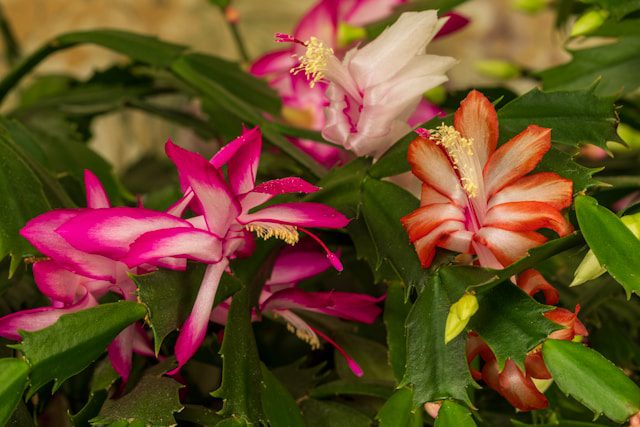Some links on this Website are affiliate links, meaning we may earn a commission if you make a purchase, at no additional cost to you. Please read our full Affiliate Disclosure for more details.
Bathrooms are naturally humid environments. Every hot shower fills the air with steam, raising humidity levels and creating perfect conditions for mold, mildew, and damp odors. While exhaust fans and dehumidifiers help, there’s also a more natural, decorative solution: plants.
Certain plants thrive in high-humidity spaces and even help absorb excess moisture from the air. These moisture absorbing bathroom plants not only keep your bathroom fresh and balanced but also improve air quality and add a touch of calm, natural beauty to the space.
Below are 15 of the best bathroom plants that absorb moisture and make your bathroom look and feel healthier.
The Best Moisture Absorbing Bathroom Plants
1. Boston Fern (Nephrolepis exaltata)
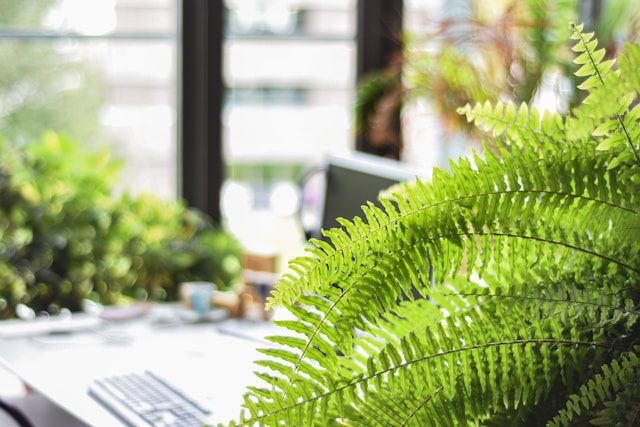
The Boston Fern is one of the best plants for humid environments. Its feathery fronds love steamy air and help draw excess moisture from the surroundings. This fern also filters common indoor pollutants like formaldehyde, making it both beautiful and functional.
To care for a Boston Fern, keep its soil moist but not soggy, and place it in bright, indirect light. Mist the leaves regularly if your bathroom isn’t very humid. With proper care, it will grow into a lush, green centerpiece.
2. Peace Lily (Spathiphyllum)
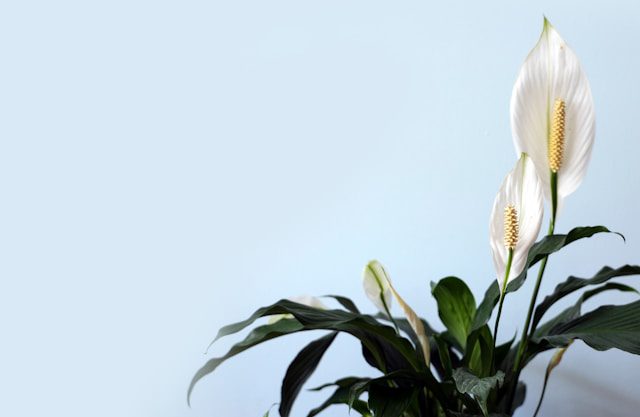
The Peace Lily is famous for its ability to purify indoor air, but it’s also one of the best moisture absorbing plants for bathrooms. It thrives in warm, humid conditions and can help prevent mold and mildew buildup.
Peace Lilies prefer low to medium light, making them perfect for bathrooms with small or frosted windows. Keep the soil slightly moist, and you’ll enjoy its glossy leaves and elegant white flowers that brighten up any space.
How To Care For Domino Peace Lily.
3. Spider Plant (Chlorophytum comosum)
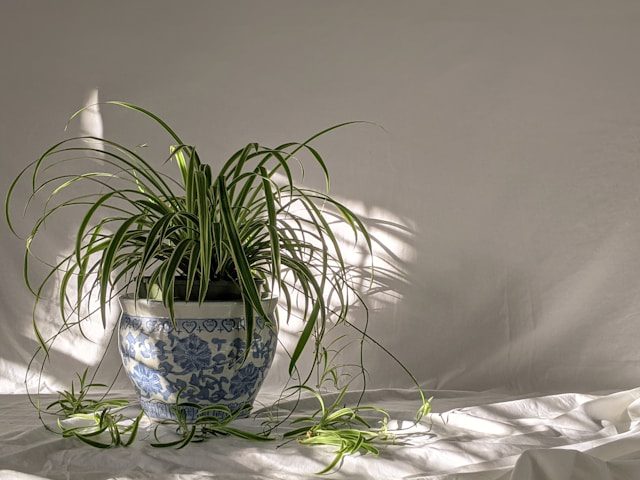
Spider Plants are among the easiest houseplants to grow and are ideal for bathrooms. They absorb humidity and filter toxins from the air, helping to keep your space fresh. Their arching leaves and small baby plantlets make them attractive in hanging pots or shelves.
These plants thrive in indirect light and require moderate watering. They are hardy and will adapt well even if your bathroom doesn’t get much sunlight.
7 Easy Tips For Growing Plants Indoors
4. English Ivy (Hedera helix)
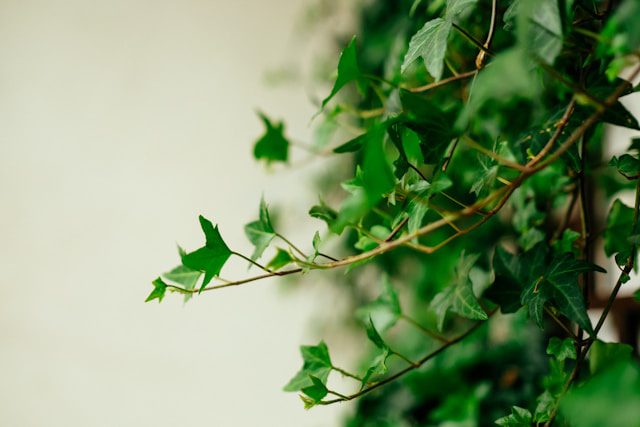
English Ivy is particularly effective in reducing airborne mold and bacteria, making it one of the best bathroom plants that absorb moisture. It enjoys humid conditions and will happily climb or trail from shelves and hanging baskets.
For best results, keep the soil slightly moist and provide bright, indirect light. Its ability to grow vertically or cascade down gives your bathroom a refreshing, natural look while improving air quality.
7 Mistakes to Avoid When Growing English Ivy Indoors (Beginner’s Guide)
5. Aloe Vera
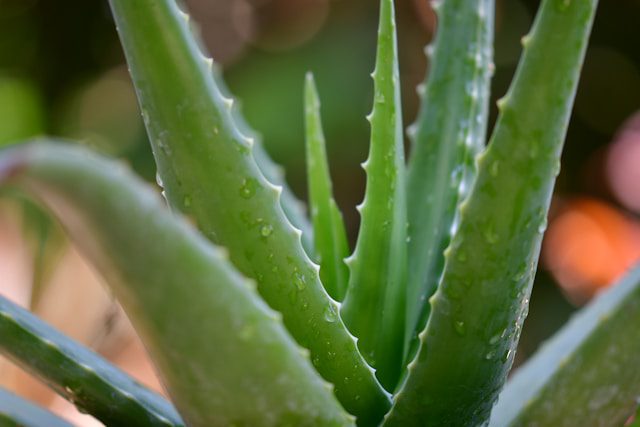
Aloe Vera is best known for its soothing gel, but it also helps absorb moisture and purify the air. It prefers bright light and a warm, steamy environment, which makes bathrooms a great place for it.
Allow the soil to dry out between waterings, as overwatering can cause root rot. Besides its moisture control benefits, Aloe Vera is also handy to have around for treating minor burns or skin irritation.
6. Bamboo Palm (Chamaedorea seifrizii)
The Bamboo Palm adds a tropical feel to any bathroom while helping to control moisture levels. It thrives in indirect light and loves humid air, making it ideal for steamy spaces.
This palm not only absorbs humidity but also removes toxins such as benzene and formaldehyde from the air. Keep its soil moist and mist the leaves occasionally to maintain healthy growth.
7. Snake Plant (Sansevieria trifasciata)
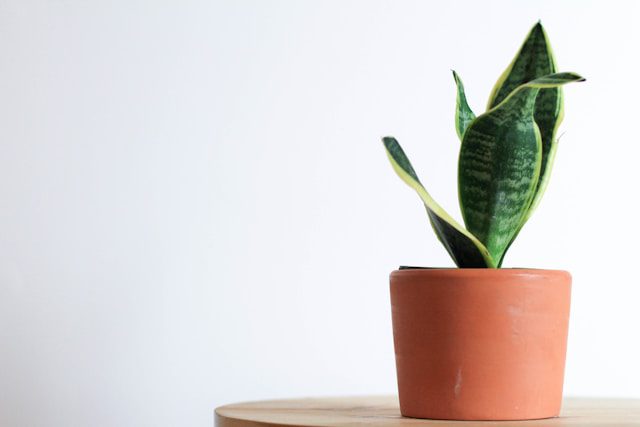
Also known as the Mother-in-Law’s Tongue, the Snake Plant is one of the most resilient indoor plants. It tolerates low light, irregular watering, and high humidity; all common bathroom conditions.
Its tall, upright leaves absorb moisture and filter out air pollutants. The Snake Plant is nearly indestructible, making it a perfect choice for anyone new to indoor gardening.
How To Remove Snake Plant Pups
How To Identify Root Rot In Succulents
8. Orchids

Orchids thrive in humid environments, which makes the bathroom an excellent place for them. They absorb moisture through their roots and leaves, helping to maintain balanced humidity levels.
They prefer indirect light and should be placed near a window or under artificial light. Water them once a week and ensure good drainage to prevent root rot. Their elegant blooms bring a touch of luxury to your bathroom decor.
9. Tillandsia (Air Plants)
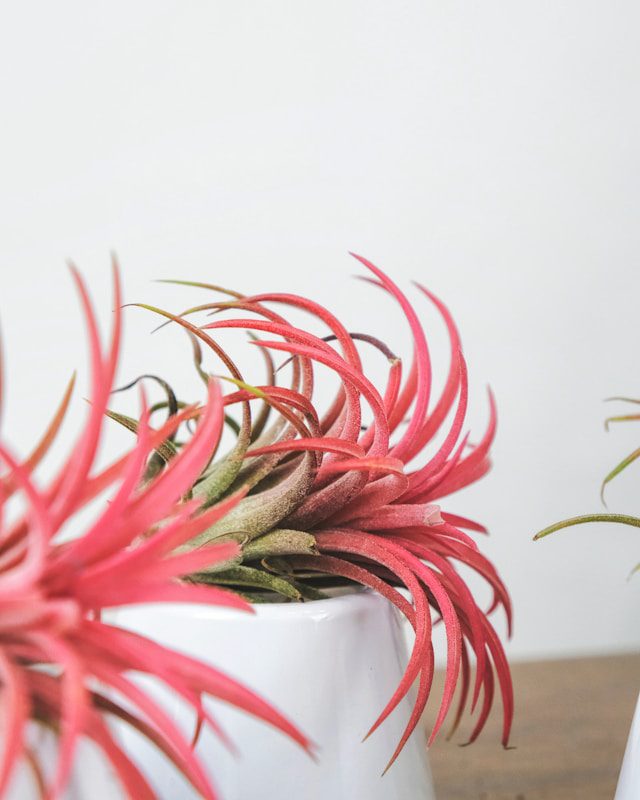
Air Plants are unique because they don’t require soil. Instead, they absorb moisture and nutrients directly from the air through their leaves. This makes them perfect for small or minimalist bathrooms.
They can be displayed in glass containers, mounted on driftwood, or placed in decorative holders. To keep them healthy, mist them a few times a week or soak them briefly in water once a week.
10. Golden Pothos (Epipremnum aureum)

The Golden Pothos is a classic indoor plant that thrives in low light and high humidity. Its heart-shaped leaves help absorb moisture and remove toxins from the air.
It’s a fast grower and looks great trailing from a hanging basket or climbing up a trellis. Water it only when the top inch of soil feels dry, as it doesn’t like to sit in soggy soil.
11. ZZ Plant (Zamioculcas zamiifolia)
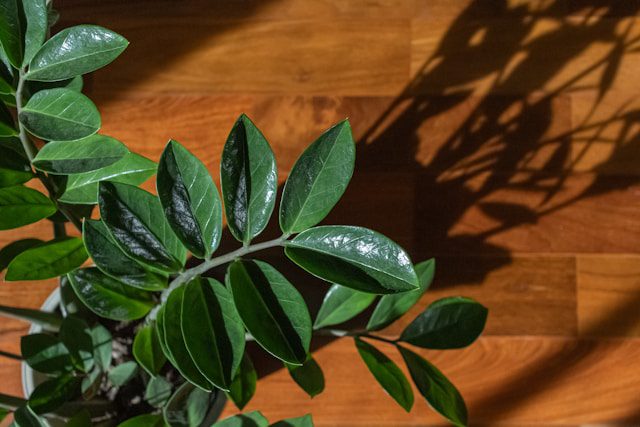
The ZZ Plant is perfect for windowless bathrooms or areas with very little light. It tolerates humidity and neglect, making it ideal for busy households.
Its thick, waxy leaves help absorb moisture and filter air pollutants. The ZZ Plant’s glossy green foliage also adds a modern and elegant touch to any bathroom.
12. Calathea
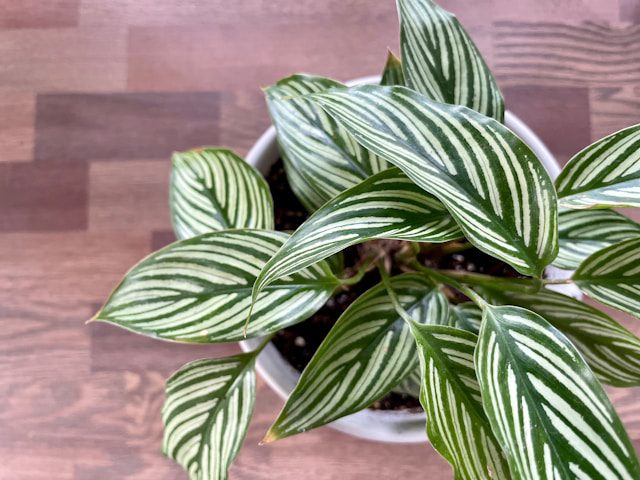
Calatheas are known for their strikingly patterned leaves and love for humidity. They thrive in steamy bathrooms and help regulate moisture levels in the air.
Keep them away from direct sunlight, which can scorch their leaves, and ensure their soil remains lightly moist. Calatheas can transform your bathroom into a vibrant and exotic space.
How To Care For Basil Plant Indoors
Can I Save A Plant From Root Rot?
13. Philodendron

Philodendrons are popular for their large, lush leaves and easy care. They naturally absorb moisture from the air, helping to reduce dampness in your bathroom.
These plants grow well in indirect light and humid environments. Water them when the top layer of soil feels dry. Their trailing vines make them great choices for hanging pots or shelves.
14. Dracaena
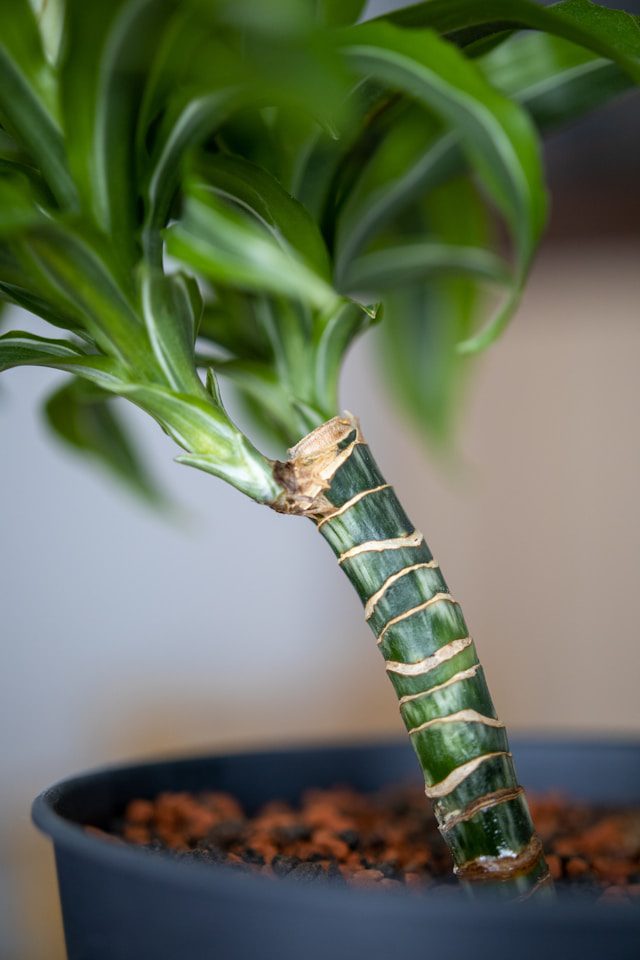
The Dracaena family includes many varieties that thrive in warm, humid bathrooms. They are excellent air purifiers and moisture absorbers.
These plants prefer filtered light and moderate watering. Overwatering should be avoided, as it can lead to root rot. With their tall, architectural leaves, Dracaenas add structure and style to any bathroom setting.
15. Cast Iron Plant (Aspidistra elatior)
True to its name, the Cast Iron Plant is one of the toughest indoor plants you can find. It tolerates low light, high humidity, and inconsistent watering.
It’s a great option for darker bathrooms where other plants might not survive. Its dark green leaves absorb moisture from the air while adding a classic, elegant look to the room.
How To Care For ZZ Plant Indoors
Benefits of Moisture Absorbing Bathroom Plants
Adding moisture absorbing plants to your bathroom comes with several benefits. They help balance humidity levels, reducing condensation and the risk of mold or mildew growth. Many of these plants also purify the air by removing toxins and pollutants, which creates a fresher and healthier environment.
Besides their practical benefits, they add visual appeal. The presence of greenery softens hard bathroom surfaces and makes the space more inviting. Most of these plants are also low maintenance and thrive in conditions that are naturally present in bathrooms.
How To Care For A Crispy Wave Fern Plant.
Which Plants Don’t Like Manure?
Tips for Growing Plants in Bathrooms
To ensure your bathroom plants thrive, choose pots with proper drainage to prevent root rot. Place plants where they can receive some natural or artificial light. If your bathroom has no window, consider rotating the plants to other rooms every few weeks.
Wipe leaves regularly to remove dust and moisture buildup. You should also occasionally open windows or run the fan to improve air circulation and prevent excessive dampness.
Frequently Asked Questions
1. Which plant absorbs the most moisture in a bathroom?
The Boston Fern and Peace Lily are among the best plants for absorbing humidity and purifying indoor air.
2. Can I grow plants in a bathroom with no windows?
Yes. The Snake Plant, ZZ Plant, and Golden Pothos can thrive in low-light or windowless bathrooms.
3. Do bathroom plants really prevent mold?
Yes. Many moisture absorbing plants help reduce humidity and absorb mold spores, preventing mildew buildup.
4. How often should I water bathroom plants?
Since bathrooms are humid, water less frequently. Always check the soil before watering to avoid overwatering.
5. Can succulents live in bathrooms?
Succulents like Aloe Vera can live in bathrooms with good light, but they prefer drier air. Place them near a bright window if possible.

